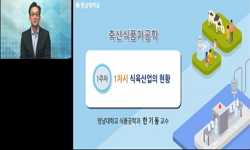세계적으로 '친환경'이 강조되면서 항공산업 등 운송산업의 연비 개선이 필요했고, 그 결과 기존 금속에 비해 기계적 물성이 훨씬 가벼운 소재가 적용되기 시작했다. 대표적인 것이 티타늄 ...
http://chineseinput.net/에서 pinyin(병음)방식으로 중국어를 변환할 수 있습니다.
변환된 중국어를 복사하여 사용하시면 됩니다.
- 中文 을 입력하시려면 zhongwen을 입력하시고 space를누르시면됩니다.
- 北京 을 입력하시려면 beijing을 입력하시고 space를 누르시면 됩니다.
https://www.riss.kr/link?id=T16663582
- 저자
-
발행사항
진주 : 경상국립대학교 항공우주특성화대학원, 2023
-
학위논문사항
학위논문(석사) -- 경상국립대학교 항공우주특성화대학원 , 항공우주공학과 항공우주공학 , 2023. 2
-
발행연도
2023
-
작성언어
한국어
- 주제어
-
발행국(도시)
경상남도
-
기타서명
A Study on the Processing Speed Improvement for Ti-6AL-4V Alloy Using Laser Assisted Machining
-
형태사항
47 p. : 삽화 ; 30 cm
-
일반주기명
경상국립대학교 논문은 저작권에 의해 보호받습니다.
지도교수: 권진회 -
UCI식별코드
I804:48003-000000032702
- 소장기관
-
0
상세조회 -
0
다운로드
부가정보
국문 초록 (Abstract)
티타늄(Ti-6AL-4V)을 사용하여 부품을 제조할 때 제조비용을 절감하기 위해 3D 프린팅과 같은 적층 성형에 기반한 연구 및 산업적 적용이 시도되고 있지만, 제품 형상 정확도와 재료 무결성이 중요한 산업에서는 여전히 다음과 같은 절삭 가공을 통해 기계적 가공이 이루어지고 있다 밀링, 회전, 드릴링. 그러나, 독특한 물성(낮은 열전도성, 높은 경도 재료 함량, 적층 구조에 의한 이방성 등)으로 인해 종래의 절삭법으로는 가공이 용이하지 않기 때문에, 난삭재로 분류된다. 본 논문에서는 가공되지 않은 소재로 분류된 첨단소재 중 우주/항공산업에서 주로 사용되는 티타늄 합금에 Laser Assisted Machining을 사용하여 기계가공 시 절삭저항을 얼마나 줄일 수 있는지를 살펴본다.
세계적으로 '친환경'이 강조되면서 항공산업 등 운송산업의 연비 개선이 필요했고, 그 결과 기존 금속에 비해 기계적 물성이 훨씬 가벼운 소재가 적용되기 시작했다. 대표적인 것이 티타늄 합금, 니켈 합금, 탄소섬유강화플라스틱(CFRP) 등으로 첨단소재로 분류된다. 이들 재료는 중량 대비 고강도 특성을 가지고 있어 구조를 경량화할 수 있기 때문에 주로 우주/항공우주 분야에서 사용되어 왔으며, 이후 그 산업에 대한 수요가 점차 증가하고 있다.
티타늄(Ti-6AL-4V)을 사용하여 부품을 제조할 때 제조비용을 절감하기 위해 3D 프린팅과 같은 적층 성형에 기반한 연구 및 산업적 적용이 시도되고 있지만, 제품 형상 정확도와 재료 무결성이 중요한 산업에서는 여전히 다음과 같은 절삭 가공을 통해 기계적 가공이 이루어지고 있다 밀링, 회전, 드릴링. 그러나, 독특한 물성(낮은 열전도성, 높은 경도 재료 함량, 적층 구조에 의한 이방성 등)으로 인해 종래의 절삭법으로는 가공이 용이하지 않기 때문에, 난삭재로 분류된다. 본 논문에서는 가공되지 않은 소재로 분류된 첨단소재 중 우주/항공산업에서 주로 사용되는 티타늄 합금에 Laser Assisted Machining을 사용하여 기계가공 시 절삭저항을 얼마나 줄일 수 있는지를 살펴본다.
다국어 초록 (Multilingual Abstract)
Research and industrial application based on additive molding such as 3D printing are being attempted to reduce the manufacturing cost when manufacturing parts using titanium (Ti-6AL-4V), but in industries where product shape accuracy and material integrity are important, mechanical processing is still performed through cutting processing such as milling, turning, and drilling. However, it is classified as Difficult-to-Cut Material because it is not easy to process with the conventional cutting method due to its unique physical properties (low thermal conductivity, high hardness material content, anisotropy due to lamination structure, etc.). In this paper, we will examine how much cutting resistance can be reduced during mechanical processing by using Laser Assisted Machining for Titanium alloys mainly used in the space/aerial industry among high-tech materials classified as rough materials.
As Eco-Friendly was emphasized worldwide, it was necessary to improve fuel efficiency in transportation industries such as the aviation industry, and as a result, materials with much lighter mechanical properties than conventional metals began to be a...
As Eco-Friendly was emphasized worldwide, it was necessary to improve fuel efficiency in transportation industries such as the aviation industry, and as a result, materials with much lighter mechanical properties than conventional metals began to be applied. Typical of these materials are titanium alloys, nickel alloys, and carbon fiber reinforced plastics (CFRP), which are classified as advanced materials. Since these materials have high strength properties compared to weight and can make the structure lighter, they have been mainly used in the space/aeronautics sector, and then the demand for their industries is gradually increasing.
Research and industrial application based on additive molding such as 3D printing are being attempted to reduce the manufacturing cost when manufacturing parts using titanium (Ti-6AL-4V), but in industries where product shape accuracy and material integrity are important, mechanical processing is still performed through cutting processing such as milling, turning, and drilling. However, it is classified as Difficult-to-Cut Material because it is not easy to process with the conventional cutting method due to its unique physical properties (low thermal conductivity, high hardness material content, anisotropy due to lamination structure, etc.). In this paper, we will examine how much cutting resistance can be reduced during mechanical processing by using Laser Assisted Machining for Titanium alloys mainly used in the space/aerial industry among high-tech materials classified as rough materials.
목차 (Table of Contents)
- ABSTRACT 1
- 연구사 1
- 본 문 2
- ABSTRACT 1
- 연구사 1
- 본 문 2
- 1.서 론 2
- 1.1) 연구 배경 2
- 1.2.1) Ti 합금 시장 동향 4
- 1.2.2) LAM 연구 동향 5
- 1.3) 티타늄 소재 특성 6
- 1.3.2) 기계적 가공 시 발생 결함 7
- 1.4) LAM 원리 9
- 2. 이론적 배경 10
- 2.1.1) 티타늄 소재 인장 시험 10
- 2.1.2) 온도에 따른 티타늄 물성치 변화 12
- 2.1.3) 레이저 거리에 따른 온도분포 15
- 2.2.1) 엔드밀의 절삭 저항, 동력 16
- 2.2.2) 저항 측정 16
- 2.2.3) 절삭조건 및 관계식 17
- 3. LAM(Laser-assisted Machining) 성능 시험 19
- 3.1) 성능 시험 방법 19
- 3.1.1) 공구 선정 기준 20
- 3.2) 엔드밀 가공성 시뮬레이션 21
- 3.2.1) 엔드밀 설계 21
- 3.2.2) 엔드밀 가공 시험환경 22
- 3.2.3) 물성치 설정 24
- 3.2.4) BC 설정 및 RPM 설정 25
- 3.2.5) 모재반력 결과 27
- 3.3 장비 구축 29
- 3.3.1 구축 컨셉 29
- 3.3.2) 레이저 항온 장비 설치 계산 30
- 3.3.3) 가공장비 제어방안 31
- 3.3.4) 가공 전략 32
- 3.4) 레이저 가공 시험결과 34
- 3.4.1) 기존 티타늄 가공실험 34
- 3.4.1) 레이저 항온 장치를 이용한 가공 테스트 36
- 3.4.2) 공구동력계를 이용한 절삭력 측정 37
- 3.5.1) 장비 구조적 문제점 개선 39
- 3.5.2) 레이저 열에 의한 장비 개선 39
- 4. 결론 41
- 4.1) 가공속도 향상 비교 41
- 4.2) 연구 고찰 및 요약 41
- 참고문헌 42
- 부록 45












